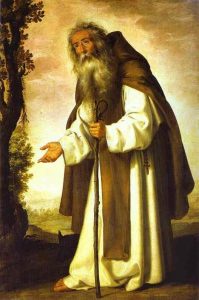 Saint Anthony of the Desert
Saint Anthony of the Desert
Patriarch of Monastic Life (251-356)
Anthony was born in Coma near Heracleopolis Magna in Fayum, Egypt in 251 AD to wealthy landowner parents. When he was about 18 years old, his parents died and left him with the care of his unmarried sister. Hearing at Mass the words, “If you want to be perfect, go, sell what you have and give to the poor, and you will have treasures in heaven.”[Mt 19:21]— staying only to see that his sister’s education was completed, placed his sister with a group of Christian virgins, a sort of proto-convent — gave away some of his family’s lands to his neighbors, sold the remaining property, and donated the funds thus raised to the poor He then left to live an ascetic life. For the next fifteen years, Anthony remained in the area. He begged an aged hermit to teach him the spiritual life. He also visited various solitaries, undertaking to copy the principal virtue of each, and then retired into the desert.
Anthony is sometimes considered the first monk to initiate solitary desertification, but there were others before him. Christian ascetics such as Thecla had likewise retreated to isolated locations at the outskirts of cities. Anthony is notable for having decided to surpass this tradition and headed out into the desert. He left for the alkaline Nitrian Desert (later the location of the noted monasteries of Nitria, Kellia, and Scetis) on the edge of the Western Desert about 95 km (59 mi) west of Alexandria. He remained there for 13 years. According to St. Athanasius, the devil fought Anthony by afflicting him with boredom, laziness, and the phantoms of women, which he overcame by the power of prayer, providing a theme for Christian art. After that, he moved to a tomb, where he resided and closed the door on himself, depending on some local villagers who brought him food. When the devil perceived his ascetic life and his intense worship, he was envious and beat him mercilessly, leaving him unconscious. When his friends from the local village came to visit him and found him in this condition, they carried him to a church.
After he recovered, he made a second effort and went back into the desert to a farther mountain by the east bank of Nile called Pispir (now Der-el-Memun), opposite Arsinoe. To serve God more perfectly, Anthony immured himself in a ruin of old abandoned Roman fort, building up the door so that none could enter.
There he lived strictly enclosed for some 20 years. According to St. Athanasius, the devil again resumed his war against Anthony, only this time the phantoms were in the form of wild beasts, wolves, lions, snakes, and scorpions. They appeared as if they were about to attack him or cut him into pieces. But the saint would laugh at them scornfully and say, “If any of you have any authority over me, only one would have been sufficient to fight me.” At his saying this, they disappeared as though in smoke. One night, while Anthony was in his solitude, many devils scourged him so terribly that he lay as if dead. A friend found him in this condition, and believing him dead carried him home. But when Anthony came to himself he persuaded his friend to take him back, in spite of his wounds, to his solitude. Here, prostrate from weakness, he defied the devils, saying, I fear you not; you cannot separate me from the love of Christ. After more vain assaults the devils fled, and Christ appeared to Anthony in His glory.
While in the fort he only communicated with the outside world by a crevice through which food would be passed and he would say a few words. Saint Anthony’s only food was bread and water, which he never tasted before sunset, and sometimes only once in two, three, or four days. He would prepare a quantity of bread that would sustain him for six months. He wore sackcloth and sheepskin, and he often knelt in prayer from sunset to sunrise. He did not allow anyone to enter his cell; whoever came to him stood outside and listened to his advice.
Then one day he emerged from the fort with the help of villagers, who broke down the door. By this time most had expected him to have wasted away or to have gone insane in his solitary confinement. Instead, he emerged healthy, serene, and enlightened. Everyone was amazed that he had been through these trials and emerged spiritually rejuvenated. He was hailed as a hero and from this time forth the legend of Anthony began to spread and grow. Anthony went to Fayyum and confirmed the brethren there in the Christian faith before returning to his fort. His admirers became so many and so insistent that he was eventually persuaded to found two monasteries for them and to give them a rule of life. These were the first monasteries ever to be founded, and Saint Anthony is, therefore, the father of cenobites of monks. He anticipated the rule of Benedict by about 200 years, engaging himself and his disciples in manual labor. Anthony himself cultivated a garden and wove rush mats.
Amid the Diocletian Persecutions, Anthony wished to become a martyr and in 311 went to Alexandria. He visited those who were imprisoned for the sake of Christ by Maximinus and comforted them. When the Governor saw that he was confessing his Christianity publicly, not caring what might happen to him, he ordered him not to show up in the city. However, the Saint did not heed his threats. He faced him and argued with him in order that he might arouse his anger so that he might be tortured and martyred, but it did not happen. At the end Anthony returned to his old Roman fort.
By this time, many more had heard of his sanctity and he had many more visitors than before. He saw these visits as interfering with his worship and went further into the inner desert. He traveled for three days before reaching a small oasis with a spring and some palm trees, that lay between the Nile and the Red Sea, and chose to settle there. He fixed his abode on a mountain where still stands the monastery that bears his name, Der Mar Antonios.
In 338, he left the desert temporarily to visit Alexandria to help refute the teachings of Arius. Although not particularly learned, Anthony was able to confound the Arians.
According to St. Athanasius, Saint Anthony heard a voice telling him “Go out and see.” He went out and saw an angel who wore a girdle with a cross, one resembling the holy Eskiem (Tonsure or Schema), and on his head was a head cover (Kolansowa). He was sitting while braiding palm leaves, then he stood up to pray, and again he sat to weave. A voice came to him saying, “Anthony, do this and you will rest.” Henceforth, he started to wear this tunic that he saw, and began to weave palm leaves.
When Saint Macarius visited Anthony, Anthony clothed him with the monk’s garb and foretold him what would happen to him.
Once, Saint Anthony tried hiding in a cave to escape the demons that plagued him. There were so many little demons in the cave though that Saint Anthony’s servant had to carry him out because they had beaten him to death. When the hermits were gathered to Saint Anthony’s corpse to mourn his death, the Saint was revived. He demanded that his servants take him back to that cave where the demons had beaten him. When he got there, he called out to the demons, and they came back as wild beasts to rip him to shreds. Suddenly, a bright light flashed, and the demons ran away. Saint Anthony knew that the light must have come from God, and he asked God where was he before when the demons attacked him. God replied, “I was here but I would see and abide to see thy battle, and because thou hast mainly fought and well maintained thy battle, I shall make thy name to be spread through all the world.”
When Saint Anthony was over ninety, he was commanded by God in a vision to search the desert for Saint Paul the Hermit. Saint Anthony went to him and buried him, after clothing him in a tunic which was a present from Saint Athanasius the Apostolic, the 20th Patriarch of Alexandria.
The monasticism established under St. Anthony’s direct influence became the norm in Northern Egypt.
St. Anthony was a man who chose to live in dire poverty, but from this poverty arose his three divine paradoxes. He was extremely underfed, yet appeared in perfect health, standing a solid six-feet tall. He maintained the appearance of youth throughout his life. He was extremely isolated, yet he suffered the agony of popularity. He was extremely ignorant, yet outsmarted the cream of Greece’s intelligentsia. Two Greek philosophers came to meet St. Anthony, and he asked why they wished to meet with a fool. When they replied that he was no fool, but wise and prudent, Anthony told them this: “If you think me prudent, become as I am, for we ought to imitate what is good. And if I had come to you, I should have imitated you; but if you to me, become as I am, for I am a Christian.” Having no desire to be converted, the philosophers departed in silence.
He is said to have survived until the age of a hundred and five, when he died peacefully in a cave on Mount Kolzim near the Red Sea. Anthony had been secretly buried on the mountain-top where he had chosen to live. His remains were reportedly discovered in 361, and transferred to Alexandria. Sometime later, they were taken from Alexandria to Constantinople, so that they might escape the destruction being perpetrated by invading Saracens. In the eleventh century, the Byzantine emperor gave them to the French Count Jocelin. Jocelin had them transferred to La-Motte-Saint-Didier, which was then renamed Saint-Antoine-en-Dauphiné. There, Anthony is credited with assisting in a number of miraculous healings, primarily from ergotism, which became known as “St. Anthony’s Fire.”
Saint Athanasius, his biographer, says that the mere knowledge of how Saint Anthony lived is a good guide to virtue.
[1] “Saint Anthony of the Desert – Lives of the Saints,” Magnificat, 13 December 2017. [Online]. Available: http://sanctoral.com/en/saints/saint_anthony_of_the_desert.html. [Accessed 2 January 2018].
[2] “Anthony the Great,” Wikipedia, [Online]. Available: https://en.wikipedia.org/wiki/Anthony_the_Great. [Accessed 2 January 2018].
[3] “St. Anthony,” New Advent, 2017. [Online]. Available: http://www.newadvent.org/cathen/01553d.htm. [Accessed 2 January 2018].
[4] J. Goerke, “St. Anthony of the Desert and the Three Divine Paradoxes,” National Catholic Register, [Online]. Available: http://www.ncregister.com/daily-news/st.-anthony-of-the-desert-and-the-three-divine-paradoxes. [Accessed 2 January 2018].
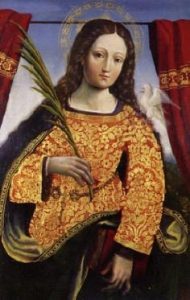 Saint Eulalia
Saint Eulalia Smoke of Satan in the Church – Part 2
Smoke of Satan in the Church – Part 2 Saint Leonard of Noblac
Saint Leonard of Noblac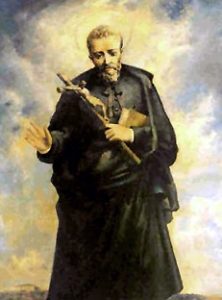 Saint Francis Borgia
Saint Francis Borgia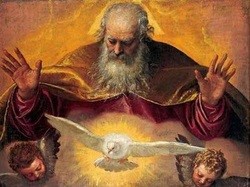

 Saint Pius X
Saint Pius X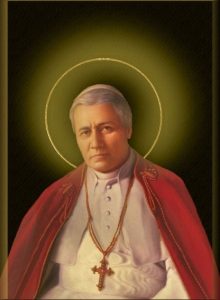 Smoke of Satan in the Church – Part 2
Smoke of Satan in the Church – Part 2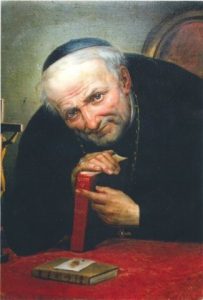 Saint Alphonsus Liguori
Saint Alphonsus Liguori Saint Goar of Aquitaine
Saint Goar of Aquitaine